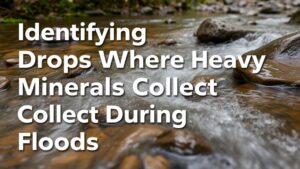Recognizing the Importance of Heavy Metals in Gold Zones
Recognizing the Importance of Heavy Metals in Gold Zones
The exploration and extraction of gold are profoundly influenced by the presence of heavy metals. Recognizing their importance is essential for geologists, miners, and environmentalists alike. Heavy metals often serve as pathfinders in gold exploration, revealing potential gold-bearing zones. This article delves into the role of heavy metals, particularly in gold zones, highlighting their significance in mineral exploration and environmental considerations.
Understanding Heavy Metals
Heavy metals are defined as metals with a specific density greater than 5 g/cm³. Common heavy metals include lead (Pb), mercury (Hg), cadmium (Cd), and arsenic (As). These elements are not only crucial for assessing mineral deposits but also have implications for mining operations and environmental health.
The Role of Heavy Metals in Gold Exploration
Heavy metals often exhibit geochemical affinities with gold, which can aid in identifying gold deposits. r presence can indicate areas where gold is likely to accumulate due to geological processes. For example:
- In many geological settings, gold and arsenic have been found to occur together, particularly in volcanic-hosted deposits.
- Mercury can also indicate gold areas, as it is often involved in the same geological processes including hydrothermal activity.
Research shows that around 80% of gold deposits contain at least one associated heavy metal, underscoring the significance of heavy metals as indicators during exploration.
Case Studies: Heavy Metals and Gold Locations
Several real-world examples illustrate how heavy metals inform gold exploration efforts:
- The Carlin Gold Trend (Nevada, USA): This area is one of the most productive gold mining districts globally and is characterized by high arsenic levels that correlate with gold deposits. Understanding this relationship has allowed for focused exploration and extraction practices.
- The Witwatersrand Basin (South Africa): This world-famous gold-producing region reveals that areas with elevated concentrations of lead and uranium often coincide with substantial gold reserves, thereby guiding exploration strategies.
Environmental Considerations
The extraction of gold often involves the use of heavy metals, which can pose environmental risks. It is critical to consider these impacts, including:
- Contamination of Water Sources: The leaching of heavy metals can lead to serious water pollution, impacting local ecosystems and human health.
- Soil Degradation: Mining activities can disturb heavy metal concentrations in the soil, leading to harmful agricultural impacts.
According to the U.S. Environmental Protection Agency (EPA), approximately 3.2 million Americans live within a mile of a hazardous waste site contaminated with heavy metals, which often involve gold mining activities. So, it becomes paramount for mining companies to implement comprehensive environmental management plans.
Addressing Concerns
Given the implications of heavy metals in gold extraction, several questions arise:
- How can miners minimize environmental impact? Useing practices such as tailings management and water treatment can substantially reduce harmful effects from heavy metals.
- What role does regulation play? Governments worldwide enforce strict regulations on heavy metal emissions and mining practices to protect ecosystems and communities.
Conclusion and Actionable Takeaways
Recognizing the importance of heavy metals in gold zones is critical for a successful and responsible mining operation. Stakeholders in the mining industry must:
- Use heavy metals as geochemical indicators to identify potential gold deposits.
- Use effective environmental safeguards to mitigate the impact of heavy metals during and after mining operations.
- Engage with regulatory frameworks to ensure compliance and promote sustainability.
By addressing these considerations, the mining sector can better balance economic gain with environmental stewardship, paving the way for a more sustainable future in gold mining.


